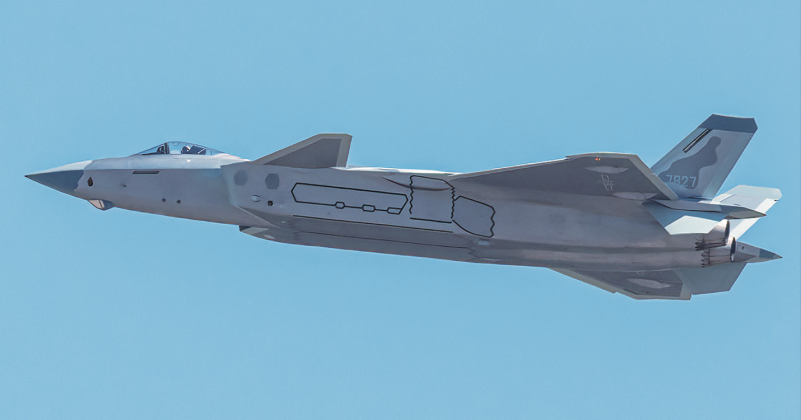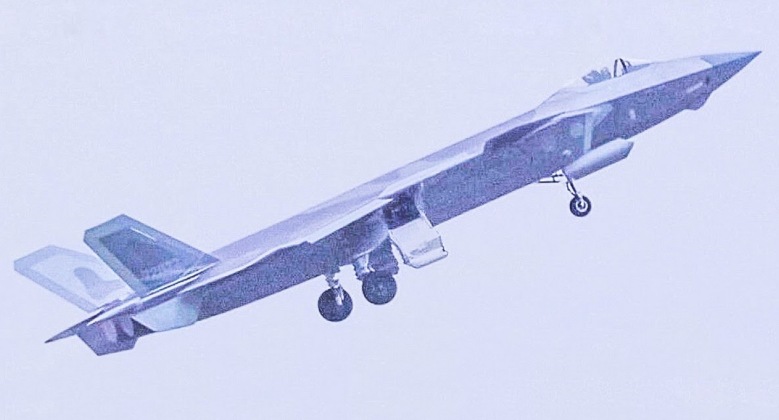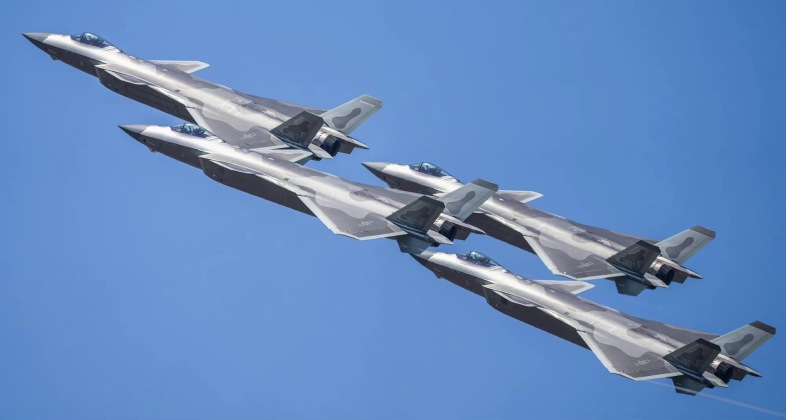News
Which Thirteen Chinese Brigades Are Now Reported to Deploy J-20 Stealth Fighters? Fleet Grows Faster as Production Expands
The Chinese People’s Liberation Army (PLA) Air Force has seen delivery rates of J-20 fifth generation fighters increase rapidly since 2021, after the aircraft was reported to have entered production on a much larger scale at the end of that year. The PLA Air Force is the sole operator of the J-20, which is one of just two combat aircraft of its generation both in production and fielded at squadron level strength alongside the American F-35. The J-20 will reportedly see delivery rates increase to 120 aircraft in 2025, meaning they will reach 250 percent the rates at which F-35s are being delivered to the U.S. Air Force despite being a much larger twin engine aircraft. Increased deliveries have allowed more brigades to receive J-20s annually, with eight brigades confirmed to have deployed the aircraft by the end of 2022 and five more reported to have received the aircraft in 2023 – of which two have been fully confirmed. With no other service in the world acquiring any class of fighter on even half the scale on which the PLA Air Force is acquiring J-20s, and with production still increasing, it is expected that the stealth fighters, will equip over 30 brigades by the end of the decade with deliveries to at least four units considered highly likely to have occurred in 2023 based on what information is available regarding production rates.

In later December 2023 two new brigades long speculate to be deploying J-20s were confirmed to have begun received them, namely the 97th Air Brigade at Dazu Air Base in Chongqing near the city of Chengdu, and the 4th Air Brigade at Foshan Air Base near Shenzhen. J-20s at the former facility replaced J-7E lightweight third generation fighters, which is a class that is currently being rapidly phased out of service and replaced by J-20s, J-16s and J-10Cs all of which are being acquired at high rates by the PLA Air Force. The 97th Air Brigade is the first unit which has replaced J-7s with J-20s. The 4th Air Brigade, meanwhile, saw J-20s replace baseline J-11 fighters, a derivative of the Russian Su-27 produced under license from the mid-1990s. The strategic location of Foshan Air Base allows J-20s to provide air defence duties over Shenzhen and Hong Kong as well as to Longpo Naval Base on Hainan Island 500km southwest which hosts the backbone of the country’s nuclear missile submarine fleet. The facility is also just 700km away from Taiwan which is a key potential hotspot for hostilities.

The J-20 was first delivered to the PLA Air Force in the spring or summer of 2016, with the 176th Air Brigade at the Dingxin Flight Test & Training Base in the Gobi Desert being the first to receive the aircraft followed in February 2018 by the 172nd Air Brigade at the Cangzhou Flight Test & Training Base near the cities of Tianjin and Beijing. Eleven months later the 9th Air Brigade at Wuhu Air Base near Shanghai received the fighters. The 9th Air Brigade was the last unit to receive new J-20s for the next two years and the last to receive baseline variants of the aircraft with derivatives of the Russian AL-31FM2 engine, before the enhanced J-20A variant with WS-10C engines joined the 1st Air Brigade at Anshan Air Base in January 2021. Chinese analysts at the time interpreted the deployment as intended to send a signal to Japan and South Korea not to intervene in potential conflict in the Taiwan Strait. This was followed a year later by deliveries to the 5th Air Brigade at Guilin Air Base. 2022 was the first year in which J-20s could be delivered to multiple bridges annually, and in March that year the 6th Air Brigade based at Zhengzhou Air Base became the sixth unit to integrate the new fighters. This was followed by confirmation in April that the 111th Air Brigade based in Xinjiang had received J-20s, and in August 2022 the 8th Air Brigade at Changxing Air Base, located near the Korean Peninsula, became the eighth to field the stealth fighters.

The delivery of J-20s to three brigades in 2022 makes deliveries to at least four brigades in 2023 highly likely when considering the rate at which production has expanded. Alongside the 97th and 4th Air brigades, the 131st Air Brigade based at Nanning Air Base near Hainan, the 41st Air Brigade at Wuyishan Air Base, and the 95th Air Brigade at Lianyungang Air Base, were all reported but not confirmed to have received the fifth generation jets. J-20 pilots’ badges appearing to show the symbol of the 131st Brigade have indicated that this unit is particularly likely to have received the aircraft. Thus the number of brigades deploying J-20s, while confirmed to be at least ten, is very likely at least twelve, with deliveries to less brigades than received the aircraft in 2022 remaining highly unlikely. The J-20 can in many respects be considered the world’s foremost fighter for air to air combat, with over twice the range of any Western fighter class and a significantly larger radar while its avionics are considered broadly on par with those of the F-35 in sophistication. The scale of its deployments and rate of acquisitions thus have very significant consequences for the balance of power in the Pacific.

The J-20’s primary armament of PL-10 and PL-15 missiles is considered to have outperformed their top American and Russian counterparts when they entered service the mid-2010s, while the U.S. Air Force began to bridge the gap with limited acquisitions of the new AIM-260 missile which was developed specifically in response. Unlike the single engine F-35 which has a very limited flight performance, less than half the J-20’s range and no ability to super cruise, the twin engine J-20 can accommodate many more missiles and has an overwhelmingly superior flight performance and very high levels of manoeuvrability. No other fighters are considered technologically on par, with the older American F-22 using dated avionics and sensors and lacking comparable network centric warfare capabilities or features such as helmet mounted sights or distributed aperture systems, which leave it at a serious disadvantage against either the J-20 or the F-35. The J-20’s capabilities have improved rapidly between production batches, with a new engine for the fighter the WS-15 having entered serial production in early 2023 and expected to begin equipping frontline units from mid-2025. The WS-15 is expected to facilitate super cruise at much faster speeds, possibly exceeding Mach 2, while revolutionising the fighter’s flight performance at all speeds, allowing for combat operations at altitudes further above the Armstrong Limit, and increasing the J-20’s already world leading range due to greater fuel efficiency.












